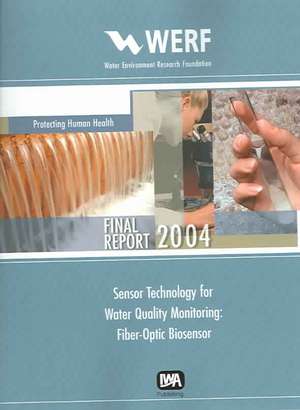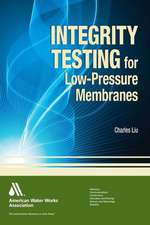Sensor Technology for Water Quality Monitoring: Werf Report S
Autor A. C. Cannons, V. J. Harwood, Andrew C. Cannonsen Limba Engleză Paperback – 30 iun 2004
Din seria Werf Report S
- 23%
 Preț: 799.04 lei
Preț: 799.04 lei - 23%
 Preț: 792.93 lei
Preț: 792.93 lei - 23%
 Preț: 785.11 lei
Preț: 785.11 lei - 23%
 Preț: 805.94 lei
Preț: 805.94 lei - 23%
 Preț: 791.01 lei
Preț: 791.01 lei - 23%
 Preț: 819.95 lei
Preț: 819.95 lei - 23%
 Preț: 793.61 lei
Preț: 793.61 lei - 23%
 Preț: 826.77 lei
Preț: 826.77 lei - 23%
 Preț: 801.44 lei
Preț: 801.44 lei - 23%
 Preț: 795.29 lei
Preț: 795.29 lei - 23%
 Preț: 791.27 lei
Preț: 791.27 lei - 23%
 Preț: 797.91 lei
Preț: 797.91 lei - 23%
 Preț: 785.11 lei
Preț: 785.11 lei - 23%
 Preț: 816.12 lei
Preț: 816.12 lei - 23%
 Preț: 835.10 lei
Preț: 835.10 lei - 23%
 Preț: 810.43 lei
Preț: 810.43 lei - 23%
 Preț: 834.15 lei
Preț: 834.15 lei - 23%
 Preț: 987.04 lei
Preț: 987.04 lei - 23%
 Preț: 873.73 lei
Preț: 873.73 lei
Preț: 960.97 lei
Preț vechi: 1248.02 lei
-23% Nou
Puncte Express: 1441
Preț estimativ în valută:
183.90€ • 199.69$ • 154.48£
183.90€ • 199.69$ • 154.48£
Carte tipărită la comandă
Livrare economică 18-24 aprilie
Preluare comenzi: 021 569.72.76
Specificații
ISBN-13: 9781843396772
ISBN-10: 1843396777
Pagini: 72
Ilustrații: 1
Dimensiuni: 210 x 279 x 4 mm
Greutate: 0.18 kg
Editura: IWA Publishing (Intl Water Assoc)
Seria Werf Report S
Locul publicării:United Kingdom
ISBN-10: 1843396777
Pagini: 72
Ilustrații: 1
Dimensiuni: 210 x 279 x 4 mm
Greutate: 0.18 kg
Editura: IWA Publishing (Intl Water Assoc)
Seria Werf Report S
Locul publicării:United Kingdom








